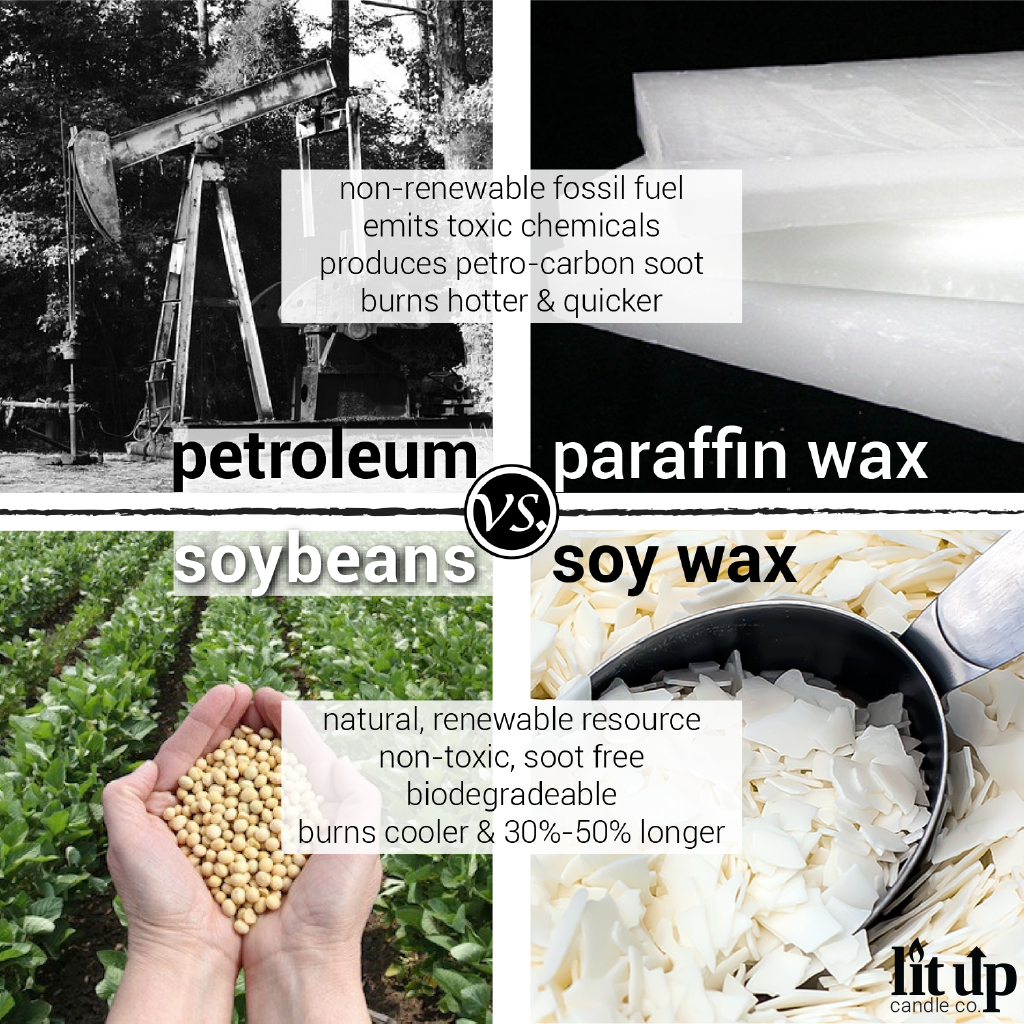Your Cart is Empty
FREE SHIPPING** on $75+ orders
There are many reasons why soy wax makes the best candles: it’s eco-friendly, clean-burning, longer-lasting and provides a better fragrance throw than other types of wax. We’ve spent a lot of time researching this; here’s what we’ve found.
ECO-FRIENDLY
Soy wax is a hydrogenated form of soybean oil which is extracted from soy beans plants, a natural, renewable and sustainable resource. Paraffin wax is made by removing the waxy substance from crude oil, a byproduct of gasoline refinement; it comes from a fossil fuel, a non-renewal resource. Therefore, using soy wax supports American farmers instead of big oil companies.
When burning candles, wax spills can happen. And if they do, soy wax is biodegradable and easily cleaned with basic soap and water; however, paraffin wax is not biodegradable or water soluble which makes clean-up much more time consuming and difficult, if not impossible.
In the 1990’s, palm wax grew in popularity as a cleaner, longer-burning alternative to paraffin wax. Palm wax is derived from palm oil, which comes from palm trees; however, out of desperation to improve their ecomonic conditions, governments of Indonesia and Malaysia have allowed palm producers to clear out some of the oldest, most diverse rain forests which has contributed to mass deforestation and huge growth in CO2 emissions. Because of the questionable ethics and environmental impact surrounding this, many suppliers have stopped carrying palm wax due to the negative environmental impact it’s causing.
While beeswax is an environmentally safe alternative to paraffin wax, there are some questionable ethics regarding the treatment of bees used to produce the wax, including: removal of wings and legs due to haphazard handling, intentional removal of the queen bee’s wings so she cannot leave the colony, and even killing bees.
CLEAN BURNING
Soy wax produces zero, zip, zilch, nada petrol-carbon soot, which means no black residue on walls, drapes and home furnishings. Because soy wax is non-toxic and burns clean, it is safe for people with asthma and allergies.
Paraffin candles release a petro-carbon soot that stains your walls, furniture and circulates through your air ducts. According to the American Lung Association, paraffin wax contains 11 documented toxins, two of which are known carcinogens: toluene and benzene. Back in 2009 researchers at South Carolina State University also presented comparable findings to the American Chemical Society (source: CNN.com).
Frequently burning paraffin candles can also aggravate asthma, cause allergy-like symptoms and irritate the respiratory tract.
LONGER-LASTING
Soy wax burns up to 50% longer than paraffin wax because soy wax has a lower melting point than paraffin wax, which means it melts at a cooler temperature and doesn’t burn as fast.
BETTER FRAGRANCE THROW
“Throw” refers to the release of fragrance from a candle: the “cold throw” is the scent released when a candle is unlit at room temperature, the “hot throw” is the scent released when the candle is burning.
There are a handful of factors that contribute to fragrance throw in candle making:
After weighing out all these factors, we intentionally choose to use soy wax in all of our candles; not only does it support our mission for sustainability, it also helps us create a high quality product.
